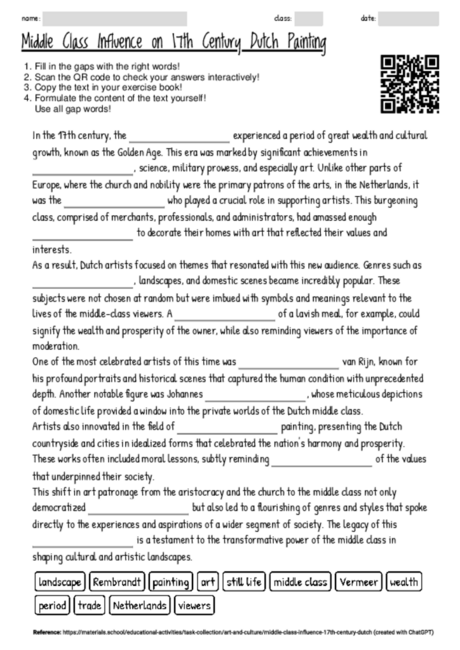Middle Class Influence on 17th Century Dutch Painting
Cloze texts serve as an effective tool in engaging students with historical content by requiring them to actively fill in missing information, thus enhancing their comprehension and retention of the material. This particular cloze text on the middle class's influence on Dutch art in the 17th century offers several benefits for educational purposes. Firstly, it introduces students to the concept of art patronage and its societal implications, making them aware of how economic and social changes can impact cultural developments. The selection of semantically important terms emphasizes the role of the middle class, key artists, and popular genres, facilitating a focused understanding of the era's artistic landscape. Additionally, the text encourages critical thinking by linking artistic themes with the values and interests of the middle class, prompting students to consider the deeper meanings behind art. The inclusion of notable figures like Rembrandt and Vermeer provides concrete examples of artists influenced by these dynamics, making the historical period more relatable. By filling in the gaps, students actively engage with the narrative, making connections between the economic prosperity of the Netherlands and its cultural flowering. This approach not only aids in memorizing facts but also in developing a nuanced understanding of history's interconnectedness. Furthermore, the cloze text format can be adapted to various learning phases, from introduction and exploration to review and assessment, making it a versatile tool in the educational repertoire.

